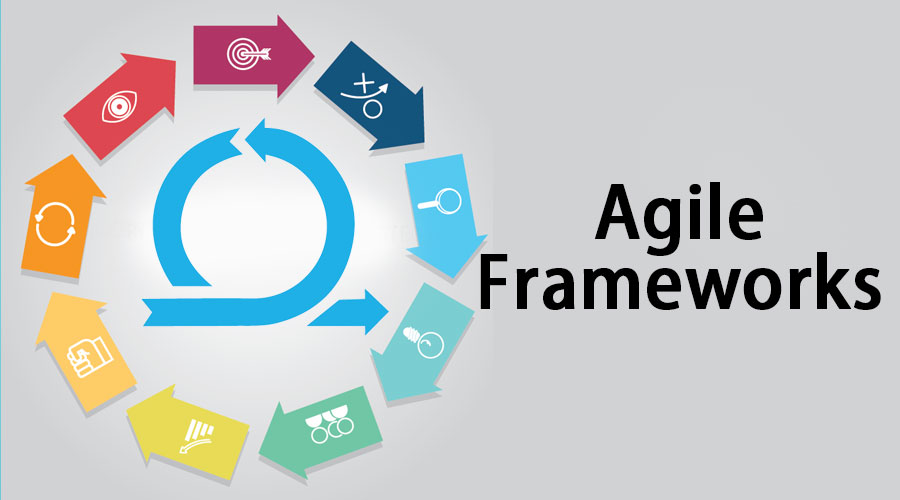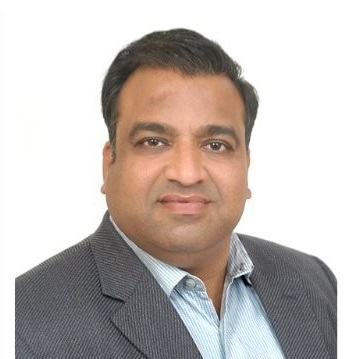-

Agile at Scale: Comparing the 5 most popular frameworks
Agile frameworks help companies deliver to customers faster and more reliably. In doing so, it's fairly easy to implement Agile in individual teams. The challenge is to implement Agile working across the entire organization.
How is Scaled Agile different from Agile?
Both terms are very closely related but the difference lies largely in the order of magnitude.
What is Agile?
Agile is a mindset. It is a way of addressing changes arising from a disruptive and uncertain environment. It comes with a set of values and principles revolving around the idea of iterative development. This usually involves self-managing, cross-functional teams working on a product. The product can be any type of deliverable. For example, it can be software, a marketing campaign, or a process improvement. The ultimate advantage of adopting Agile development is that it enables teams to deliver quality products faster and with greater predictability.
What is Agile at Scale?
The Agile at Scale aims to drive Agile principles, mindsets, values, and practices in the entire company. It means they are no longer limited to employees (teams) but also apply to other levels of organizations, both horizontal and vertical. These include programs, portfolios, and culture. Also, Agile at Scale enables large organizations to address a problem that is too complex for one team to handle by involving multiple teams and departments to work on it at the same time. The goal is to improve collaboration and processes to produce faster and more agile results.
What do all Agile frameworks have in common?
Scrum, DAD, SAFe®, Spotify model, LeSS. The list of Agile and Agile at Scale frameworks is very long and diverse. But they all are Agile after all which means they must have something in common.
Fixed iteration rate
In Agile project management, iteration refers to a specific period of time during which the development process takes place. An iteration can be as short as 1 week and as long as 4 weeks. A fixed length is important as it allows for measuring productivity and helps with planning, reviewing processes, and estimating delivery times.
Iterative and incremental development
You can plan better for the unknown by breaking down the whole product development into smaller manageable chunks. The purpose of working iteratively is to allow more flexibility for responding to changes, even last-minute ones.
Continuous improvement
Since Agile teams follow regular iterations, they have an opportunity to review the work and reflect on what went well and what requires improvement. It allows them to identify ways to improve their work and methods and reduce wasted time.
Self-organized teams
Agile methodology strips away micromanagement and encourages teams to self-organize their workflow. It means that self-organizing teams do not wait for managers to assign work to them. Instead, they determine the work that needs to be done, prioritize tasks, and manage the timelines (iterations) on their own.
Delivering value to customers
The goal of innovation and product development is to bring some value to human lives. Agile frameworks help to bring ideas to life by having customers’ pain points and needs in a center of attention. It is not a coincidence that customer satisfaction is the top principle in the Agile Manifesto.
What Are the Real Challenges in Scaling Agile?
A framework helps you avoid reinventing the wheel with regard to the structure, processes and principles to follow for you to become agile.
But the real challenges in an agile transition are at a completely different level.
They have to do with the mindset and the culture you need to become genuinely agile: letting go of (much of your) control and trusting that everyone wants to perform at their best.
That means:
- decentralising decisions.
- creating transparency and alignment around strategic goals and how you organize work.
- finding a balance between autonomous teams and cross-team dependencies.
- changing virtually everything in the way you organize work.
- delivering sooner and perfecting products “in the wild.”
- collaborating throughout your business and with your customers.
- updating, replacing and integrating your information systems to enable transparent information flow throughout your company.
What frameworks are available for agile scaling?
There is no single right way to implement agile at scale throughout your organization. Rather, there are several frameworks you can choose from to implement the agile way of working at all levels. Here are the most important frameworks:
SAFe
The Scaled Agile Framework (SAFe) provides you with various organizational and workflow templates to implement agile practices in your organization. SAFe concentrates on the three areas of "Agile software development", "Lean product development" and "Systematic thinking". It promotes collaboration and coordination, as well as execution across multiple teams. SAFe is constantly being improved, and its latest version consists of four levels:
Team: the fundamentals of Scrum are used at the Team layer. Cross-functional teams that work in sprints facilitated by a Scrum Master.
Program: the gathering of multiple Agile Teams to deliver a collection of several Product Increments in about five sprints.
Large Solution: we only speak of Large Solutions when a product needs to be developed by more than 150 people. This means that additional people are added to the teams to ensure quality.
Portfolio: mainly relates to leaders within the organization. This mainly concerns employees who work with portfolio management and are responsible for strategic plans and budgets. They are designated to determine the budgets per ART.
LeSS
Large-Scale Scrum (LeSS) is a minimalist framework that –, unlike other – frameworks, only includes a few rules and roles. It applies regular scrum to large-scale development. LeSS and SAFe partly use the same pattern: Both use Scrum at the team level, a backlog for different teams, cross-team planning and the principles of self-organization.
LeSS is a framework for scaling agile product delivery. The idea driving everything in Large Scale Scrum is to do more with less, avoid overhead and avoid local optimizations, and adopt a whole product focus by organizing your teams around the diverse ways your product brings value to your customers. For example, a team focusing on voice features and another on texting.
DA
Disciplined Agile (DA), formerly known as Disciplined Agile Delivery (DAD), is a process decision framework designed to deliver IT solutions in a results-oriented manner. The framework creates a foundation to implement Agile at Scale in large enterprises. Therefore, it combines Scrum and Kanban with transformational skills in areas including portfolio management, governance, DevOps, human resources and finance.
Disciplined Agile gives guidance on four levels:
Foundation gives you the principles, promises, and guidelines of the “DA mindset”, lean and agile principles, more traditional approaches, roles and team structures you can adopt, and what you need to choose your way of working (WoW).
Disciplined DevOps extends standard DevOps — streamlining development and operations — by integrating security and data management.
Value Streams help you tie your strategies together and improve each part of your business in the context of the whole.
Disciplined Agile Enterprise helps you create a culture and structure conducive to change, learning, and innovation.
Spotify
Actually, Spotify didn't want to develop its own framework, just let employees work more autonomously and flexibly. Over time, however, agile principles and practices have evolved at all levels of the company to the point where it has become a holistic framework. It is an employee-oriented, autonomous framework for Agile at Scale. Spotify attaches particular importance to the corporate culture and the networks in the organization. In this context, Spotify has established the Spotify Health Check, among other things.
S @ S
Scrum@Scale (S@S) is based - as the name suggests - on Scrum. It is an extension of Scrum that is usually used by companies that already work with Scrum on a team level. The framework aims to align the growing organization with common goals. In doing so, the so-called Scrum of Scrums, which consists of the Scrum Masters of the individual teams and the MetaScrum of all product owners, coordinates the implementation of the framework.
Which Scaling Agile Framework Should be Adopted?
Every organization is different and there isn’t a “one size fits all” approach. When deciding what large-scale agile development model works best in a particular setting, analyze the needs and constraints of your specific case. So, no matter which scaled agile approach you want to go for, there needs to be an understanding of what you need. They seem to be similar but there are discrepancies among them that take the form of team size, training, and certification, methods and practices adopted, and technical practices required an organizational type. You should choose the right one not just for now, but for the future as well.
Follow Us on: LinkedIn
About the Author

Kamal Rastogi is a serial IT entrepreneur with 25 yrs plus experience. Currently his focus area is Data Science business, ERP Consulting, IT Staffing and Experttal.com (Fastest growing US based platform to hire verified / Risk Compliant Expert IT resources from talent rich countries like India, Romania, Philippines etc...directly). His firms service clients like KPMG, Deloitte, EnY, Samsung, Wipro, NCR Corporation etc in India and USA.